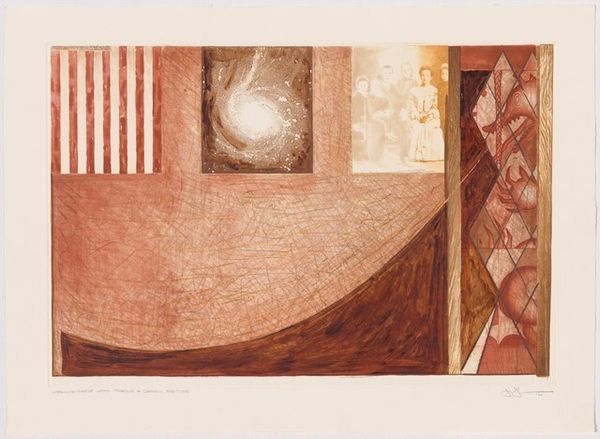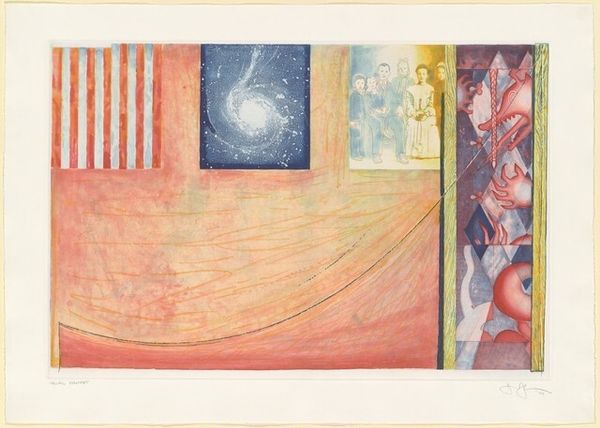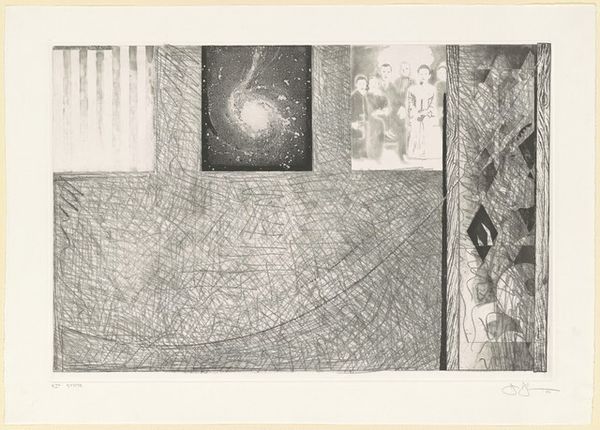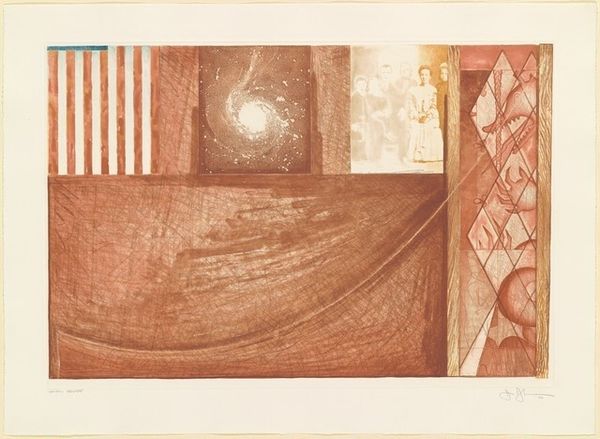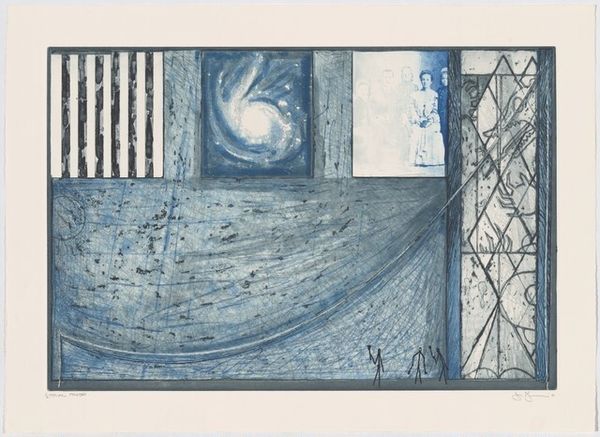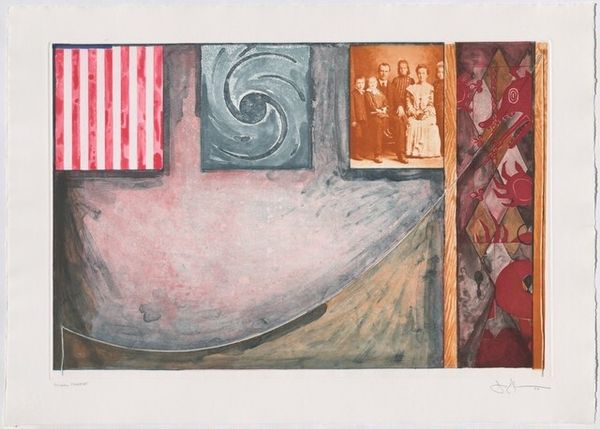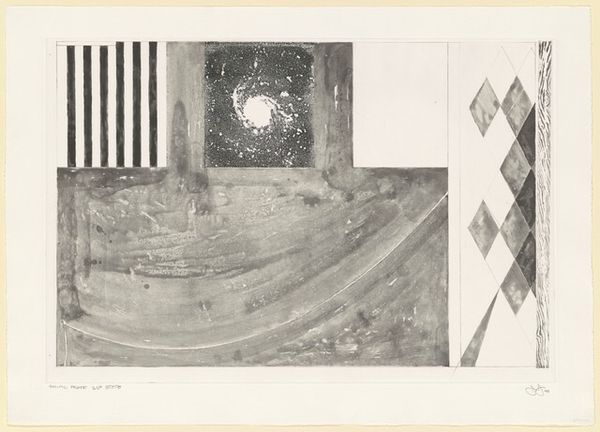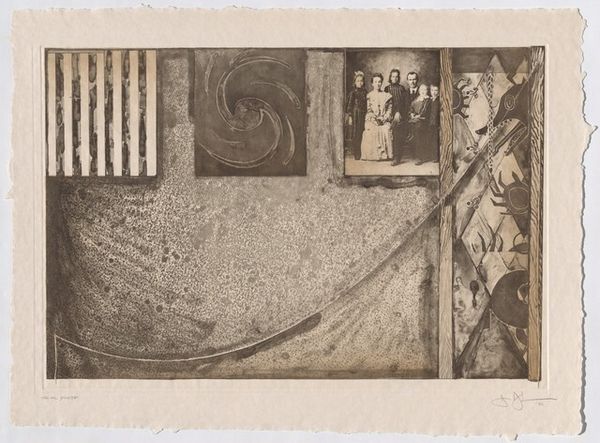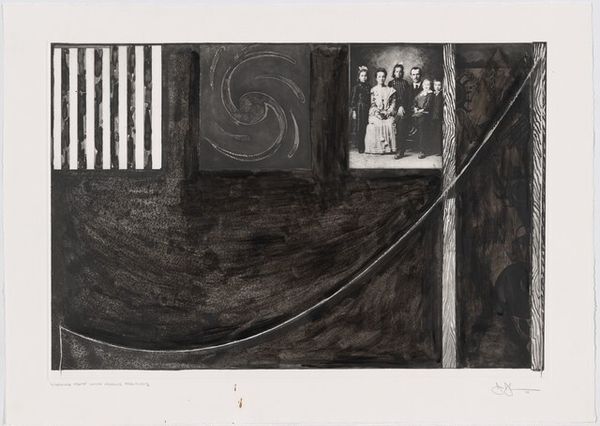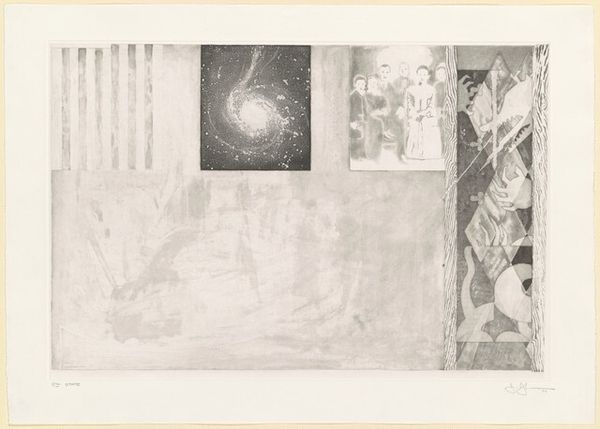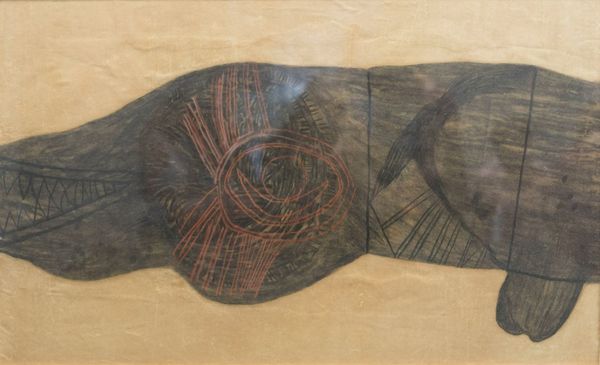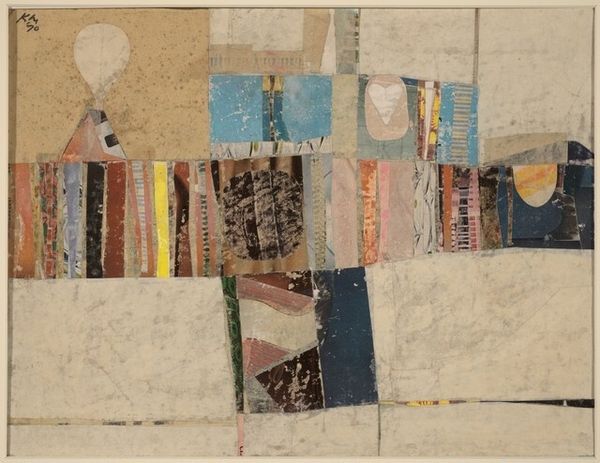
mixed-media, print, graphite
#
mixed-media
#
contemporary
#
water colours
# print
#
neo-dada
#
abstraction
#
line
#
graphite
Dimensions: plate: 45.4 x 67.31 cm (17 7/8 x 26 1/2 in.) sheet: 56.52 x 78.74 cm (22 1/4 x 31 in.)
Copyright: National Gallery of Art: CC0 1.0
Curator: Looking at Jasper Johns's "Untitled," from 2001, a mixed-media print employing graphite and watercolors, I'm struck by how it blends disparate images. What are your initial impressions? Editor: I see fragments. Patches of red and white stripes beside a monochrome swirl – almost galactic. A photograph, then some kind of geometric, ruby-toned panel, encased in ochre... It gives me this overall fragmented feeling, like memory struggling for coherence. Curator: I think that’s a powerful reading. The imagery chosen speaks volumes about 20th-century identity and experience, especially viewed through a post-colonial, transatlantic lens. The American flag recurs in Johns’s work as a loaded symbol; a spiral evokes forces of the universe, then there's what seems like a civil rights-era photo that evokes very specific sociocultural dynamics. He encourages us to examine these juxtaposed images as historical traces, raising questions of power, narrative and representation. Editor: Right, but is he celebrating or critiquing? That flag… Is it patriotism, or an interrogation of its values, particularly after major shifts in US cultural awareness? Placing it beside those other, more ambiguously representational elements raises the political temperature considerably. Curator: Exactly. And it gets further complicated by the formal construction. The medium itself — printmaking — invites thoughts of replication and mass dissemination, adding layers of socio-political commentary, the influence of media and image consumption in defining identity. He pushes us beyond a simple interpretation of ‘meaning’ and towards an engagement with art's social function and our own positioning in relation to the dominant narrative. Editor: That geometric red form pulls the eye. Is it meant to create visual tension, that juxtaposition? Curator: It also perhaps speaks to a larger sense of alienation present within contemporary political discourse—an entangling that serves more to ensnare than to clarify. Johns is not trying to solve issues; he's forcing the audience to become more aware. Editor: He seems intent on disorienting, inviting dialogue rather than offering a pronouncement. His art almost resists passive viewing, creating these frictions to keep its politics dynamic.
Comments
No comments
Be the first to comment and join the conversation on the ultimate creative platform.
